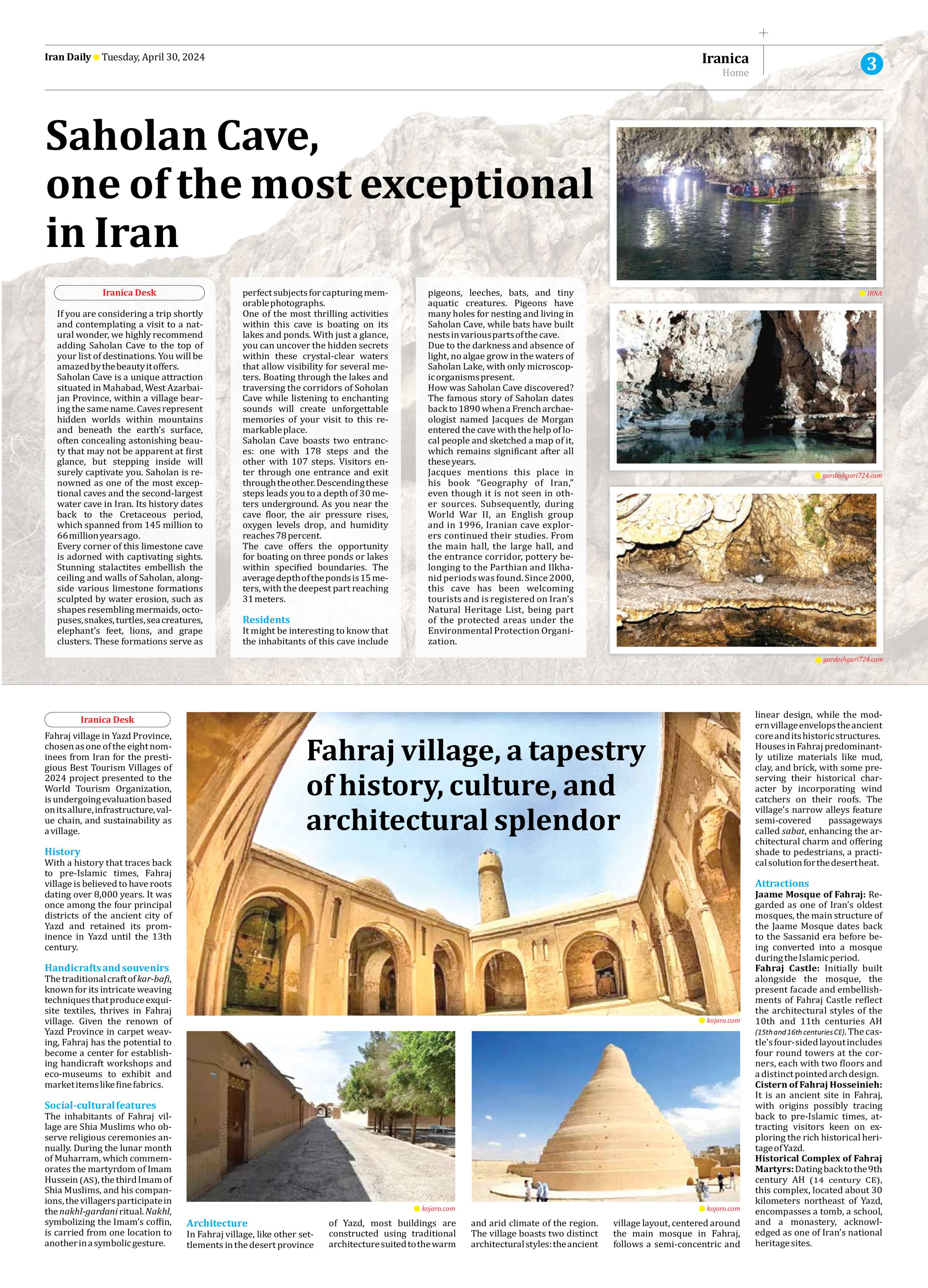
Fahraj village, a tapestry of history, culture, and architectural splendor
Fahraj village in Yazd Province, chosen as one of the eight nominees from Iran for the prestigious Best Tourism Villages of 2024 project presented to the World Tourism Organization, is undergoing evaluation based on its allure, infrastructure, value chain, and sustainability as a village.
History
With a history that traces back to pre-Islamic times, Fahraj village is believed to have roots dating over 8,000 years. It was once among the four principal districts of the ancient city of Yazd and retained its prominence in Yazd until the 13th century.
Handicrafts and souvenirs
The traditional craft of kar-bafi, known for its intricate weaving techniques that produce exquisite textiles, thrives in Fahraj village. Given the renown of Yazd Province in carpet weaving, Fahraj has the potential to become a center for establishing handicraft workshops and eco-museums to exhibit and market items like fine fabrics.
Social-cultural features
The inhabitants of Fahraj village are Shia Muslims who observe religious ceremonies annually. During the lunar month of Muharram, which commemorates the martyrdom of Imam Hussein (AS), the third Imam of Shia Muslims, and his companions, the villagers participate in the nakhl-gardani ritual. Nakhl, symbolizing the Imam’s coffin, is carried from one location to another in a symbolic gesture.
Architecture
In Fahraj village, like other settlements in the desert province of Yazd, most buildings are constructed using traditional architecture suited to the warm and arid climate of the region. The village boasts two distinct architectural styles: the ancient village layout, centered around the main mosque in Fahraj, follows a semi-concentric and linear design, while the modern village envelops the ancient core and its historic structures.
Houses in Fahraj predominantly utilize materials like mud, clay, and brick, with some preserving their historical character by incorporating wind catchers on their roofs. The village’s narrow alleys feature semi-covered passageways called sabat, enhancing the architectural charm and offering shade to pedestrians, a practical solution for the desert heat.
Attractions
Jaame Mosque of Fahraj: Regarded as one of Iran’s oldest mosques, the main structure of the Jaame Mosque dates back to the Sassanid era before being converted into a mosque during the Islamic period.
Fahraj Castle: Initially built alongside the mosque, the present facade and embellishments of Fahraj Castle reflect the architectural styles of the 10th and 11th centuries AH (15th and 16th centuries CE). The castle’s four-sided layout includes four round towers at the corners, each with two floors and a distinct pointed arch design.
Cistern of Fahraj Hosseinieh: It is an ancient site in Fahraj, with origins possibly tracing back to pre-Islamic times, attracting visitors keen on exploring the rich historical heritage of Yazd.
Historical Complex of Fahraj Martyrs: Dating back to the 9th century AH (14 century CE), this complex, located about 30 kilometers northeast of Yazd, encompasses a tomb, a school, and a monastery, acknowledged as one of Iran’s national heritage sites.







